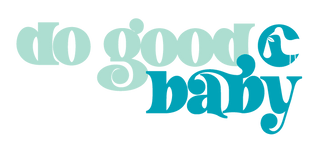
How to get started using cloth diapers
How to get started using cloth diapers
Cloth diapers are a great way to reduce your environmental impact, safer for your baby and a money saver over time, but getting started can be a bit overwhelming. With so many different types and brands available, it's hard to know where to begin. In this blog post, we'll walk you through the basics of how to get started using cloth diapers. You can also check out the free Cloth Diaper 101 classes from Do Good Baby for an interactive and visual learning experience.
1. Understand the Types of Cloth Diapers: There are several types of cloth diapers available, including prefolds, fitted, pocket, all-in-two, and all-in-one diapers. Let’s put them into two categories: those with TWO separate parts and ONE part.
TWO components: Prefolds are the most basic types of cloth diapers and require folding, fastening with snappis and a waterproof cover. Fitted diapers have elastic around the legs and waist for a snug fit, and require a separate waterproof cover. Pocket diapers have a pocket in the shell (cover) where you can stuff absorbent inserts. All-In-Two diapers have an outer shell with a snap-in or lay-in absorbent insert.
ONE component: All-In-One diapers come with built-in absorbent layers and do not require any additional inserts or covers. All-In-One (AIO) cloth diapers are often labeled as easy-to-use because they go on and off much like a disposable. Do Good Baby offers dependable, absorbent and durable AIO cloth diapers.
Also, different brands of covers and diapers are size adjustable - meaning they adjust as your baby grows so you don’t have to buy a new size of diapers. Understanding the different types of cloth diapers will help you decide which one is best suited for your lifestyle.
2. Choose the Right Material: Cloth diapers are typically made from natural fibers like cotton, bamboo, hemp, or a combination of these materials. Each material has its own pros and cons. Cotton is soft, absorbent, and easy to clean, but it may not be the most sustainable option as it requires a lot of water and energy to produce. Bamboo is a more sustainable option as it grows faster and requires less water than cotton, but it can be more expensive. Hemp is known for its durability and absorbency, but it can take longer to dry. Consider your priorities, budget, and lifestyle when choosing the material for your cloth diapers.
3. Build Your Cloth Diaper Stash: To get started with cloth diapers, you'll need to build a stash of diapers that will last you between laundry days. The number of diapers you'll need depends on the age of your baby, how often you plan to do laundry, and the type of cloth diapers you choose. A best practice is to launder your diapers every 2-3 days. A good starting quantity is 24-36 diapers. You may choose to start with a few different types of cloth diapers to see which ones work best for you and your baby before investing in a larger stash.
4. Learn How to Properly Care for and Use Cloth Diapers: Using cloth diapers may seem intimidating at first, but with some practice, it becomes routine. Caring for cloth diapers involves washing and drying them properly. Follow the manufacturer's instructions for washing, but in general it is important to prep your new cloth diapers by washing and drying them at least three times according to the manufacturer. After use you'll need to dispose of any solid waste in the toilet, store dirty diapers in a dry pail or wet bag, and wash them with a cloth diaper-safe detergent (no fragrance, fillers or softeners). Avoid using fabric softeners or bleach as they can damage the diapers. Typical wash instructions will look similar to this: first wash diapers in cold water, quick wash cycle without detergent; then wash on HOT with detergent with extra rinse cycle. Hang or lay flat to dry, or use a dryer on low heat if allowed by the manufacturer.
When putting on a cloth diaper, make sure it fits snugly around your baby's waist and legs to prevent leaks. If using prefolds or flats, learn how to properly fold and fasten them. Use only cloth approved diaper balms and ointments. You don’t want to use any products or detergents that coat the diaper material and affect its absorbency. Remember to change diapers frequently to prevent rashes and leaks.
Taking time to set up an organized diaper changing area in your home will help you feel successful in your cloth diaper journey. Take a look at cloth diaper changing stations on Pinterest, use bins or drawers to organize your clean diapers, use a covered trash bin with a removable bucket for easy transport to the washing machine and have fun with ways to make cloth fit into your lifestyle.
Getting started with cloth diapers is easier than you might think. Choose your diaper type, build your stash, and learn how to care for them. With a bit of practice, you'll be a cloth diaper pro in no time! If doing it all on your own still seems daunting but you want to reap the benefits of using cloth, check out a cloth diaper delivery service in your area.
